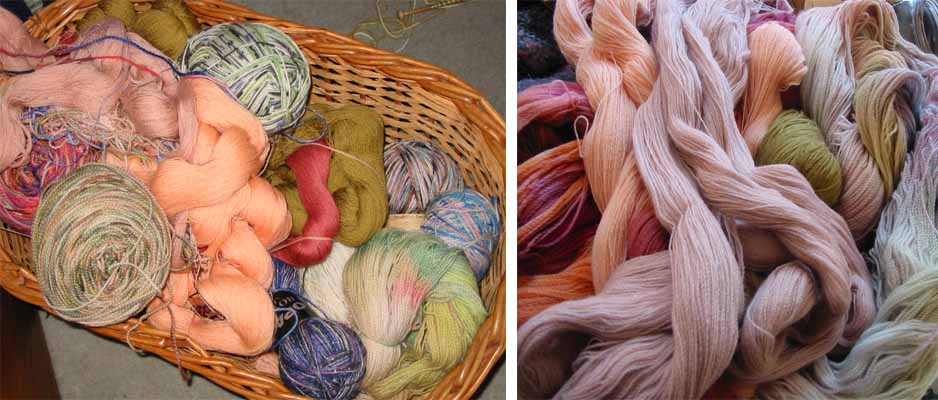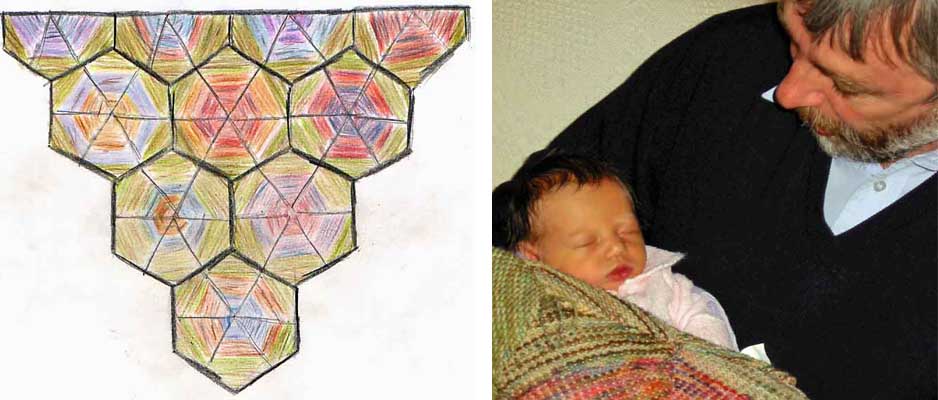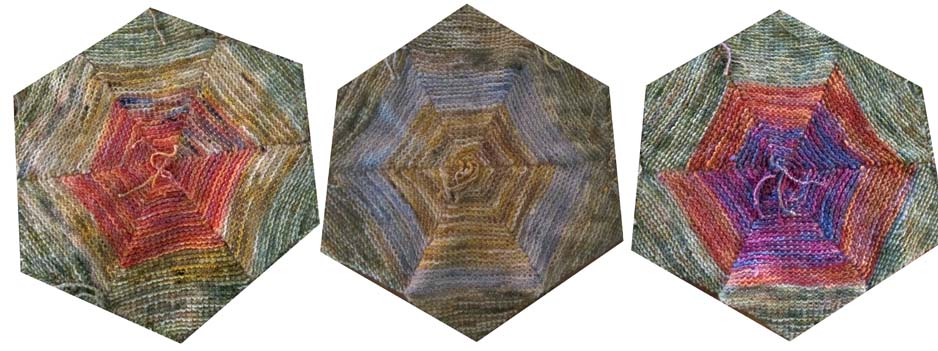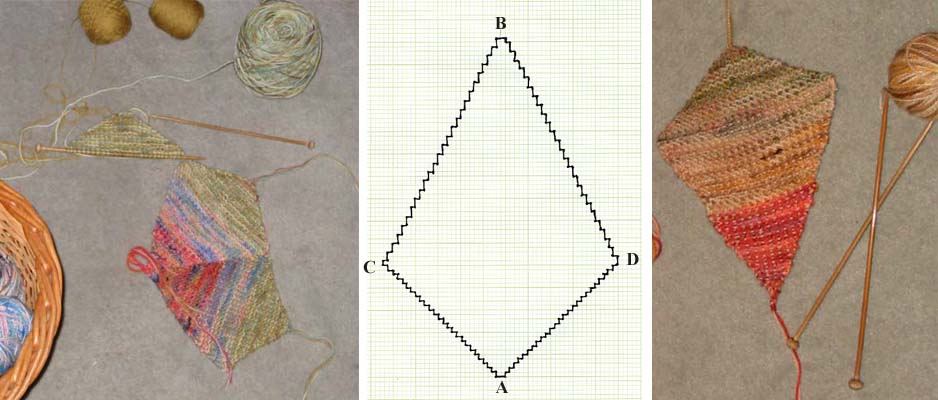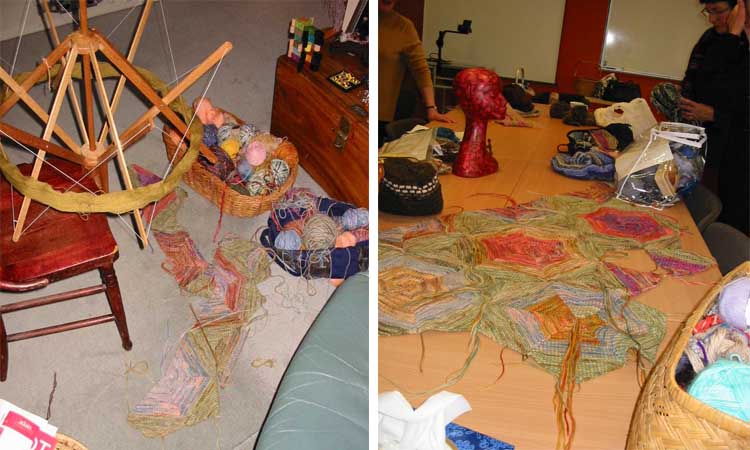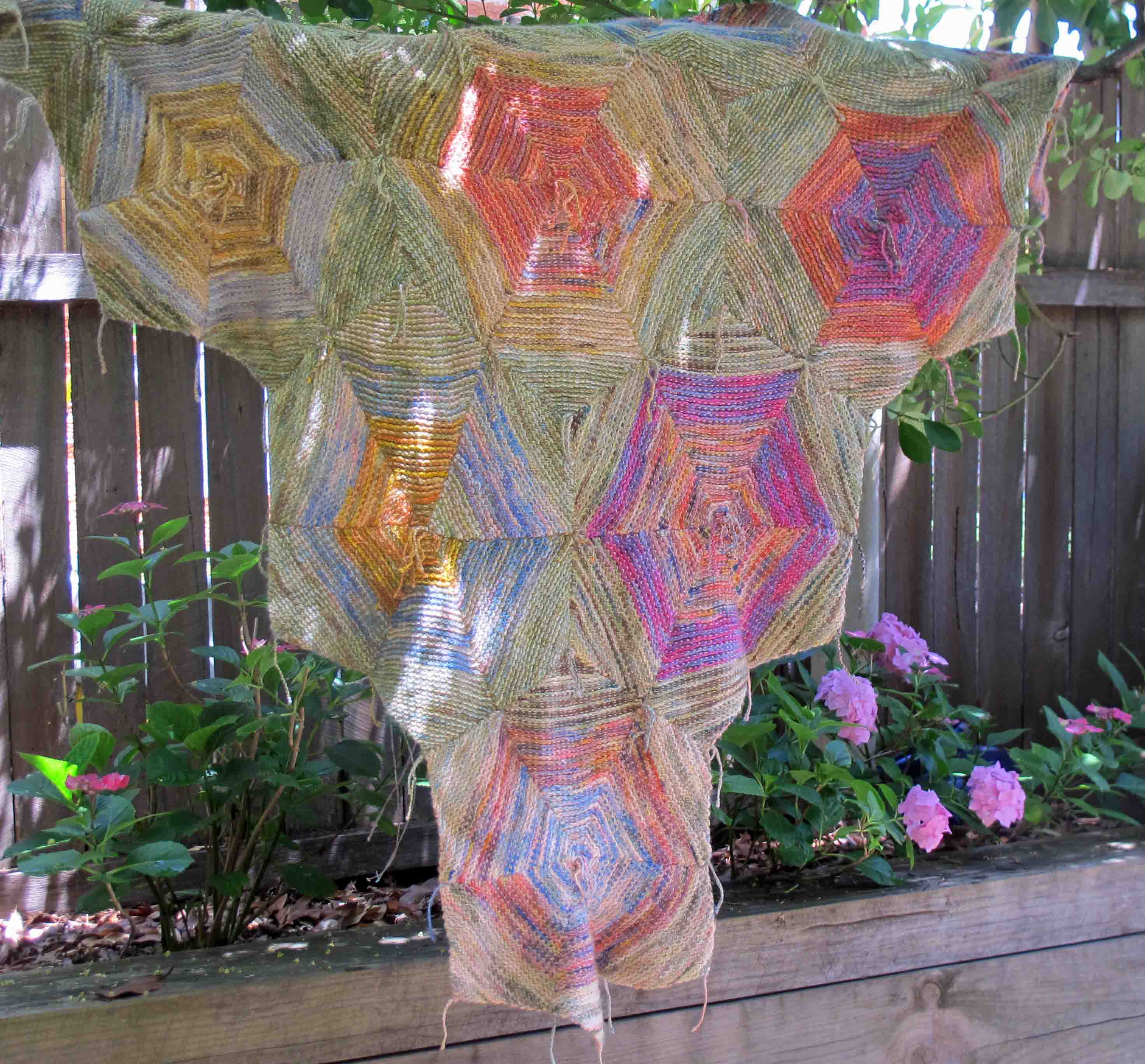There was another baby on the way – this time it was our daughter and son-in-law who were setting up the nursery at their place. The baby was due late in July 2003 and in the weeks before, I was doing workshops around New Zealand for the NZ Machine Knitters Guild. The shawl project went with me and was just about finished when I got home a few days before Clare Mae was born.
These are some of the yarns I’d put together for the shawl. It’s a mix of plain coloured lace weight wools and space dyed or hand painted 4ply yarns. I had a trusty favourite pair of 3.75mm bamboo needles ready for action.
Here’s the overall plan of the shawl and the first picture of the end result. By far the most important aspects of this picture are Clare Mae and her adoring Grandpa Ivan, but look again at the sketch on the left. There are six full hexagons with three half hexagons along the top. Each of the full hexagons is made up of six kite-shapes, and the half hexagons have three kite-shapes each.
And here are three of the finished full hexagons. Each has an outer section of predominantly green yarns and each has two similar but differing second and third colour ways. These central bits are similar in size from one hexagon to the other but it’s a rough similarity only. Likewise within any one hexagon each of the kite-shapes has a similar-ish number of rows of the various colour ways but I varied them intentionally for effect. You’ll notice too that the innermost third of two of the kite-shapes in the left hand hexagon has a different coloured yarn to that of the other four. That’s probably a sign of my running short of the featured yarn and deciding not to worry about it! A final point – notice that the centre of each hexagon has several plaited yarn ends as a feature. I like securing yarns this way on such projects – beats threading the ends in any time. Time now to explain how to make the kite-shapes and how they go together.
Each kite-shape is made according to the centre graphic here. Cast on two stitches with one of the yarns at point A, join in the other yarn then work in Woven Garter stitch increasing at both ends of the needle in every row till you get to C-D and have 52 stitches. The picture on the left shows the yarns I was using for the first part of the kite-shapes in this hexagon. The multi-coloured, predominantly green one was Yarn A and Yarn B was two threads of the green/brown lace weight yarn at the top. Within the next couple of rows after C-D I changed both yarns for about 20 or so rows and then changed again for the final rows before getting to the last 2 stitches and fastening off at point B. Now you’ll see from the graph that once I got to C-D I started decreasing and it was at a slower rate than that of the earlier increases. I did this by knitting together the last two stitches of each row.
The picture on the left was taken before I left for New Zealand – the one on the right just before I headed home. I’ve included these two pictures to show how I put shawls such as this together. Before I started I knew what the overall structure and shape was to be but which coloured kite-shape went where happened somewhat organically. I could have made all the hexagons and half hexagons first and occasionally I do that. But most often I sew them together as I go. And here’s the end result.
